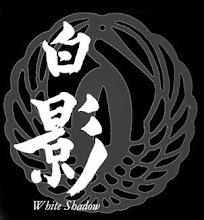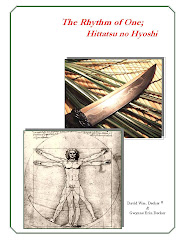1. instructor’s preference
2. style of training
3. cultural dictates
4. your physical size or limitations
5. environment, urban or rural
6. state or local laws
7. security requirements
8. preferences & perceptions
9. budgetary constraints
1. Instructor’s preference: If you are already training in a particular martial art then your instructor will have a definite knife preference, based on the style he teaches. For example our karate instructor preferred small knives like keramit and folders because he trained mostly in a Filipino or Indonesian based art. Therefore his instruction favored close-in techniques, best suited to small knives. As his student you are obliged to follow that path or find another instructor. Some teachers will not object to you training with another person, while others strictly prohibit it. This can be a very touchy subject to bring up so you had better know your instructor pretty good before you ask. Otherwise you may suddenly find yourself without any teacher. If your instructor’s style is Combato or some other western style then his choice of weapon will most likely be based around a larger KaBar type fighting knife and broader techniques. During your search you will find that not only is there a difference in distancing and movement between inside and outside arts, there is also a difference in mentality. Do not mistakenly think that the forms in one style can be simply transposed into another. If you train under this assumption you will waste a lot of time.
2. Style of training: I think that this is adequately explained in the previous paragraph. There are certain weapons associated with certain styles. For example, you will not find a filipino stylist training with an Arkansas Toothpick. Depending upon which part of the islands he comes from you might find him using a dagger of similar size and shape. It is also possible that he might be partial to a barong, keris, or punal, or he may prefer the tiny kerambit tipped with a deadly poison. His choice will be a reflection of the village he came from and what his teacher preferred. Persons training in ethnic styles are often encouraged to wear the traditional garb and learn the language. This takes us to topic number three.
3. Cultural dictates: This does not necessarily mean that you have to be Korean to study a Korean art, although there are great advantages in understanding the art if you are. Typically, if you are a serious student of any art you have a desire to learn more about the culture in areas beyond the mechanical techniques. Some instructors may insist that as a part of your training that you wear traditional garb and learn at least a working knowledge of the technical language, a dojo vocabulary. They will also insist that you train with a knife representative of that culture. Other schools could care less what you use, as long as you pay your dues and testing fees. Oddly enough, often times it is the American instructor who tries to be more Japanese or Korean than their Asian counterpart. At times this can rise to ludicrous levels of silliness and get in the way of actually learning the true art. If you are of a certain ethnic background then I would encourage you to investigate your parent art and see if it suits your personality. I truly believe that styles evolved based on an ethnic mentality and that the shape of the weapons they carried grew out of that.
4. Physical limitations: Your own physical size will suggest the size knife that you should carry and what techniques you are reasonably capable of. Never try to over-compensate for your size or gender. Work within those natural constraints and you will suffer fewer injuries and be more successful. Be selective in choosing a style of martial arts based on your size. Sure a small person can learn to do judo as well as a big person, but do you think that on the streets you can successfully throw a person six foot four inches tall if you are only five foot tall? Be realistic in the expectations you make of yourself. Physical size may also limit the size knife you can readily conceal on your person. Again, if you are five feet tall then secretly carrying a Bowie that is sixteen inches long is going to be tough. Unless you have very strong shoulders and wrists swinging a two-pound Bowie is going to be a tiring exercise. If you have short arms don’t try to offset that by carrying a longer knife, pick a short, fast knife and learn to fight close-in. A good sharp knife is a great equalizer. Strength is not a requirement for knife fighting but stamina is a valuable asset. Therefore, rather than worrying about building muscle mass concentrate on building stamina.
5. Environment: Where do you live and where do you travel? This can influence the style knife you can reasonably carry without being looked on as a nut-case. If you spend a lot of time in rural America, farming, hunting, or working in construction you may get by carrying a knife in plain view. This is not usually the case. If you stop at the local Wally Mart or convenience store on your way home and you are still wearing your machete you may find yourself being swarmed by security guards or police. Obviously you must never carry a weapon on or near a school or airport whether it is concealable or not! If you really have concerns for your safety when travelling then you should read the “travelling with weapons” section in our new book. Common sense dictates carrying smaller knives in congested areas and larger ones in the country. This is not only for reasons of legality but for your ability to deploy them if you need to. Cold climates require longer blades than do warm climates. A kerambit with a two and three quarter inch blade will be totally ineffective against a man wearing a heavy winter coat. A twelve inch bladed bowie is unnecessary if your opponent is dressed in jeans and a T-shirt. Practicality is a big part of making environmental and other choices when choosing a knife.
6. Legality: This follows naturally on the heels of the previous paragraph. The difficulty is in knowing what is legal and what is not. This is rarely defined in local laws and is instead left up to the whims of the local jurisprudence. Other times there are hard and fast rules; i.e. no double-edged knives, no blades in excess of three inches, no locking blades, etc. Many times I have carried a knife on the basis of “see no evil” in other words, out of sight out of mind. It is never good policy to flaunt your knife in public especially in crowded areas. Someone is certain to panic and call for the police or security if they see a Crocodile Dundee™ bowie hanging on your belt while you’re at the Mall. When in doubt carry a small folder and hope for the best. With foreign countries all bets are off. No matter what you do, as an American, you are probably breaking their laws.
7. Security requirements: Legality be damned, you feel your life is endangered every
time you walk to and from the parking garage to your office. Sometimes security has to take precedence over legality. You must be truthful with yourself and know that your fears are well-founded. Only you can judge the potential for encountering violence in your everyday life. Fear alone is not justification enough for carrying an Uzi or a Bowie to work. What do the crime statistics say? Know what is on the news and on the streets because these are often quite different than what is actually reported in government crime statistics. Will a pocket folder provide you with the edge you need, based on the crime in your area, or do you need something bigger in your handbag or tucked in your waistband?
8. Preferences and Perceptions: Finally we get down to the fun stuff, the gray areas that are usually based on our desires not our needs. How do I know? Because this was where I began my own knife collecting many years ago. Maybe we read a book where the hero carried a Bowie, or a stiletto, and that formed a vivid image in our mind. We equate the hero’s deeds with that particular weapon and are swayed to buy one just like it. This is how Hollywood creates the fantasy weapons market. Other times our choice is based on having a knife just like Dad carried, or Grandpa always used when he went hunting. These are heroes too in their own right. Maybe that knife you want just looks: mean, tough, deadly, magical, whatever. Perceptions often form our individual sense of reality and a weapon is an extension of who we are or whom we want to be. So our choice is often subliminally based on how we want to be perceived by others. Do we want to been seen as the hero of the Alamo, a secret agent, a deadly assassin, or the warrior who wins the heart of the beautiful damsel? Very few people will admit to the inner workings that drive their selection process. Why? Because they are too personal or they may be buried so deeply they do not truly know. A buyer’s choice may be based on aesthetics, purity of line, form or function. The mind may be stimulated by an appealing combination of materials or colors. The decision of one knife over another may be based on how well it fits in the hand. These are all things that a marketing person wrestles with when deciding which knife goes to market and which ones get shelved. Most of these attributes have minimal influence on the effectiveness of the weapon or its suitability for the user. Quite often they may even be at odds with what the user actually needs.
9. Budgetary Constraints: This is the most painful part of the selection process. Can you justify spending six hundred dollars on a fighting knife that will most likely never see a drop of blood drawn? When a six dollar knife will perforate an attacker with aplomb why do we feel we need to spend a month’s wages on a custom knife? This brings us back to preferences and perceptions. The flip side is what can we do when we cannot find the money to purchase a top of the line fighting knife? There are times that we have to face that reality and choose the best quality knife that we can afford. That may not be a knife that fits any of the other eight parameters outlined above. As I have said before, the perfect fighting knife is the one you have with you when you need it. Style, preference, aesthetics, legality, ethnicity, physical limitation, etc all are thrown to the winds when faced with the imminent threat of violence.
Spending some time in advance and giving consideration to the other attributes may arm you with a good knife should that time come. I hope that you never have need of it, but if you do, I hope that you have chosen your knife wisely.
David Decker
White Shadow Dojo






No comments:
Post a Comment